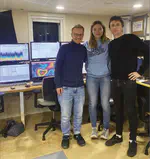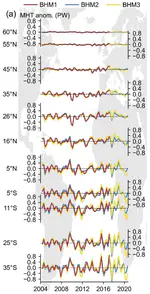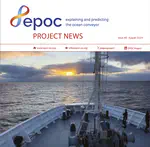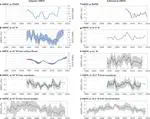 Eleanor Frajka-Williams
Eleanor Frajka-WilliamsProject - EPOC
Explaining and Predicting the Ocean Conveyor
Explaining and Predicting the Ocean Conveyor
Project website: http://epoc-eu.org
EPOC – Explaining and Predicting the Ocean Conveyor is a collaborative EU-funded research project aiming to improve understanding of the Atlantic Meridional Overturning Circulation (AMOC) and its role in climate. The project brings together observational, modelling, and theoretical approaches to better quantify AMOC variability, its driving processes, and future evolution under climate change. EPOC supports coordinated European efforts to enhance climate prediction capabilities and inform policy-relevant assessments of ocean circulation changes.
Eleanor Frajka-Williams
Professor of Ocean Dynamics in a Changing Climate
I am a physical oceanographer who uses ocean observations to investigate ocean dynamics and circulation in a changing climate. I have a particular interest in problems spanning scales (from micro- to large-scale) or spheres (biogeosphere, cryosphere, atmosphere), and in methods that leverage traditional observations with new platforms and satellite data.
Posts
Eleanor attended an AAORIA and Partnership for Atlantic Cooperation meeting in Washington DC in August 2024. The objective of the workshop - with attendees from the USA, UK, Germany, France, Norway, Denmark, South Africa, Kenya, Argentina, Brazil and elsewhere - was to identify priority action areas for AAORIA.
The AMOC webinar series kicked off today with a webinar from Rebecca Hummels of GEOMAR, speaking on observations of the boundary currents and AMOC at 11°S - the TRACOS array. Stay tuned for future webinars on 18th April (Elaine McDonagh and Gokhan Danabasoglu), 23 May (Fiamma Straneo and Monika Rhein) and 20th June (Renellys Perez and Jaime Palter). Webinars will be archived here in case you miss them.










